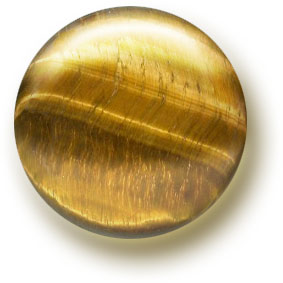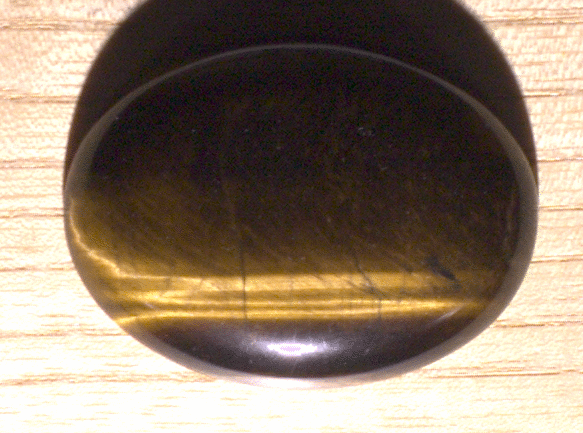Chatoyancy on:
[Wikipedia]
[Google]
[Amazon]

 In
In
 When the term "cat's eye" is used to describe a gemstone by itself, it typically refers to cat's eye chrysoberyl . It can also be used as an adjective to indicate the chatoyance phenomenon in another stone, for example, cat's eye aquamarine.
When the term "cat's eye" is used to describe a gemstone by itself, it typically refers to cat's eye chrysoberyl . It can also be used as an adjective to indicate the chatoyance phenomenon in another stone, for example, cat's eye aquamarine.

 In
In gemology
Gemology or gemmology is the science dealing with natural and artificial gemstone materials. It is a specific interdisciplinary branch of mineralogy. Some jewellery, jewelers (and many non-jewelers) are academically trained gemologists and are qua ...
, chatoyancy ( ), also called chatoyance or the cat's eye effect, is an optical
Optics is the branch of physics that studies the behaviour and properties of light, including its interactions with matter and the construction of instruments that use or detect it. Optics usually describes the behaviour of visible, ultravio ...
reflectance effect seen in certain gemstone
A gemstone (also called a fine gem, jewel, precious stone, semiprecious stone, or simply gem) is a piece of mineral crystal which, when cut or polished, is used to make jewellery, jewelry or other adornments. Certain Rock (geology), rocks (such ...
s. (Historically, the term has applied specifically to gems; in woods and other materials the effect is more broadly known as "figure" or iridescence.)
Coined from the French , meaning cat's eye, the chatoyant effect is typically characterized by one or more well-defined bands of reflected light, reminiscent of a cat's eye, which appear to glide across a gem's surface as the object is moved, or when the observer moves while viewing it.
Chatoyancy is caused by the presence of fibrous structures within the material, such as in tiger's eye
Tiger's eye (also called tiger eye) is a
chatoyant gemstone that is usually a metamorphic rock with a golden to red-brown colour and a silky lustre. As members of the quartz group, tiger's eye and the related blue-coloured mineral hawk's e ...
quartz, or by fibrous inclusions and cavities, as seen in cat's eye chrysoberyl
The mineral or gemstone chrysoberyl is an aluminate of beryllium with the formula Be Al2 O4. The name chrysoberyl is derived from the Greek words χρυσός ''chrysos'' and βήρυλλος ''beryllos'', meaning "a gold-white spar". Despit ...
, in which the effect is caused by the presence of titanium dioxide, which aligns perpendicularly to produce the effect.
Description
Chatoyancy in the gemstonechrysoberyl
The mineral or gemstone chrysoberyl is an aluminate of beryllium with the formula Be Al2 O4. The name chrysoberyl is derived from the Greek words χρυσός ''chrysos'' and βήρυλλος ''beryllos'', meaning "a gold-white spar". Despit ...
is induced by the presence of the mineral rutile
Rutile is an oxide mineral composed of titanium dioxide (TiO2), the most common natural form of TiO2. Rarer polymorphs of TiO2 are known, including anatase, akaogiite, and brookite.
Rutile has one of the highest refractive indices at vis ...
, a mineral primarily composed of titanium dioxide
Titanium dioxide, also known as titanium(IV) oxide or titania , is the inorganic compound derived from titanium with the chemical formula . When used as a pigment, it is called titanium white, Pigment White 6 (PW6), or Colour Index Internationa ...
. These rutile precipitates align perpendicularly, contributing to the cat's eye effect. This alignment is attributed to the rutile's lattice parameter, which matches only one of the three orthorhombic crystal axes of chrysoberyl, leading to its preferred orientation in that direction.
Optimal presentation of effect
To bring out the chatoyancy effect, gemstones are typically fashioned into acabochon
A cabochon (; ) is a gemstone that has been shaped and polished, as opposed to faceted. The resulting form is usually a convex (rounded) obverse with a flat reverse. Cabochon was the default method of preparing gemstones before gemstone cuttin ...
cut, characterized by a rounded, flat base rather than facets, with the fibrous structures aligned parallel to the base. High-quality specimens display a single, sharply defined band of light that moves across the stone when rotated, while lower-quality stones may show a banded effect similar to cat's-eye quartz. Faceted stones do not showcase the effect well.
Varieties of chatoyant materials
Gem species known for this phenomenon include the aforementionedquartz
Quartz is a hard, crystalline mineral composed of silica (silicon dioxide). The Atom, atoms are linked in a continuous framework of SiO4 silicon–oxygen Tetrahedral molecular geometry, tetrahedra, with each oxygen being shared between two tet ...
, chrysoberyl
The mineral or gemstone chrysoberyl is an aluminate of beryllium with the formula Be Al2 O4. The name chrysoberyl is derived from the Greek words χρυσός ''chrysos'' and βήρυλλος ''beryllos'', meaning "a gold-white spar". Despit ...
, beryl
Beryl ( ) is a mineral composed of beryllium aluminium Silicate minerals#Cyclosilicates, silicate with the chemical formula Be3Al2(SiO3)6. Well-known varieties of beryl include emerald and Aquamarine (gem), aquamarine. Naturally occurring Hex ...
(especially. aquamarine varieties), charoite, tourmaline
Tourmaline ( ) is a crystalline silicate mineral, silicate mineral group in which boron is chemical compound, compounded with chemical element, elements such as aluminium, iron, magnesium, sodium, lithium, or potassium. This gemstone comes in a ...
, labradorite, selenite, feldspar
Feldspar ( ; sometimes spelled felspar) is a group of rock-forming aluminium tectosilicate minerals, also containing other cations such as sodium, calcium, potassium, or barium. The most common members of the feldspar group are the ''plagiocl ...
, apatite
Apatite is a group of phosphate minerals, usually hydroxyapatite, fluorapatite and chlorapatite, with high concentrations of Hydroxide, OH−, Fluoride, F− and Chloride, Cl− ion, respectively, in the crystal. The formula of the admixture of ...
, moonstone, thomsonite and scapolite amongst others. Chatoyancy is not limited to gemstones but can also be found in various wood species and carbon fiber. Synthetically made gemstones with optical fibers can also have chatoyancy. These gemstones are available in a variety of vibrant colors.
Cat's eye terminology
 When the term "cat's eye" is used to describe a gemstone by itself, it typically refers to cat's eye chrysoberyl . It can also be used as an adjective to indicate the chatoyance phenomenon in another stone, for example, cat's eye aquamarine.
When the term "cat's eye" is used to describe a gemstone by itself, it typically refers to cat's eye chrysoberyl . It can also be used as an adjective to indicate the chatoyance phenomenon in another stone, for example, cat's eye aquamarine.
In woodworking
Chatoyancy in wood occurs in various species – particularlyhardwood
Hardwood is wood from Flowering plant, angiosperm trees. These are usually found in broad-leaved temperate and tropical forests. In temperate and boreal ecosystem, boreal latitudes they are mostly deciduous, but in tropics and subtropics mostl ...
s and the various types of Nanmu woods of China and South East Asia, particularly where stresses from the weight of the growing tree result in denser patches, or where stresses cause burl
A burl (American English) or burr (British English) is a tree growth in which the grain has grown in a deformed manner. It is commonly found in the form of a rounded outgrowth on a tree trunk or branch that is filled with small knots from d ...
or '' bird’s eye''. This ‘figure’, which has a striking three-dimensional appearance, is highly prized by woodworkers and their clients alike, and is featured regularly in furniture, musical instruments, and other decorative wood products. Figuring takes on a variety of forms and is referred to as ''flame'', ''ribbon'', ''tiger stripe'', ''quilting'', among other names.
This effect is sometimes called ''wet look'', since wetting wood with water often displays the chatoyancy, albeit only until the wood dries. Certain finishes cause the wood grain to become more pronounced. Oil finishes, epoxy
Epoxy is the family of basic components or Curing (chemistry), cured end products of epoxy Resin, resins. Epoxy resins, also known as polyepoxides, are a class of reactive prepolymers and polymers which contain epoxide groups. The epoxide fun ...
, and shellac
Shellac () is a resin secreted by the female Kerria lacca, lac bug on trees in the forests of India and Thailand. Chemically, it is mainly composed of aleuritic acid, jalaric acid, shellolic acid, and other natural waxes. It is processed and s ...
can strongly bring out the ''wet look'' effect. When the refractive index of the finish nearly matches that of the wood, light scattering no longer occurs at the wood surface, adding the appearance of depth to the wood's figure.
Measurement
No method to measure wood chatoyance is unanimously accepted by the scientific community. Some methods have been proposed, such as one named PZC, which was used to measure typical values for a number of wood species; some results are reported below:See also
* *References
;General * Webster, R., Jobbins, E. A. (Ed.). (1998). ''Gemmologist's compendium.'' St Edmundsbury Press Ltd, Bury St Edwards. *Mitchell, T. et al. ''Proceedings of the Electron Microscopy Society of America (EMSA)'', 1982. {{Refend Mineralogy Optical phenomena Wood-related terminology